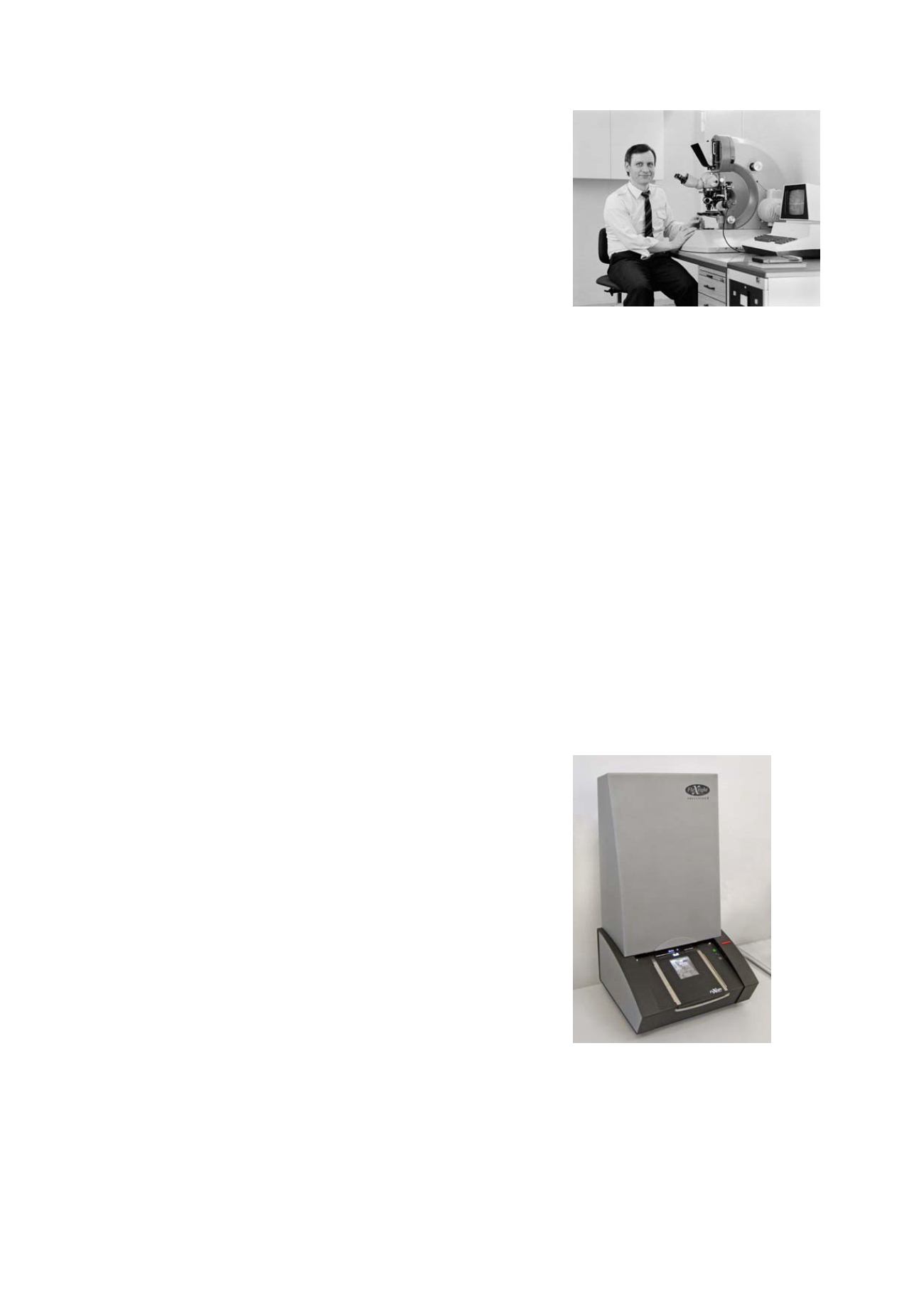
photographs such as Michael Kenna has so skilfully created in his book
Le Notres Gärten
can hardly be achieved by digital means. Generally spe-
aking, my impression is that prints of black-and-white photographs ta-
ken digitally appear to be less impressive than those in colour.
From 2005 on, I also always carry a Canon IXUS, a Lumix DMC-LX by Pa-
nasonic or a Samsung NV 24 on our trips. The pocket format of these ca-
meras weighing only 200 g allows me to take pictures which would not be
possible with medium-format cameras or larger digital cameras. The ca-
mera fits into the pocket of a coat, and with the resolution range of 10-12
mega pixels per image, good photos measuring up to 50 x 70 cm can be
printed. This is consistent with the possibilities offered by 135 mm film.
Aspherical zoom lenses in the focal length range of 35 to 110 mm (in
small picture format) and image stabilisation ensure exceptional image
quality even when taking hand-held shots. For instance, one can even
take panoramic photos with the Canon-Ixus 960 IS by means of the
"stitch assistant". By using SD chips weighing not more than one gram,
the weight of the filmmaterial is practically omitted; previously it always
had to be carried along. With a 4 gigabyte SD-chip, approximately 750
JPEG images of 3000 x 4000 pixels per image can be saved. In my opinion
this type of camera will gain relevance in the future. In many cases, the
weight of a camera is decisive for its use, and the lighter and smaller it is,
the more often one carries it in one's pocket. Another aspect is that one
does not attract attention with such a camera because almost everyone
takes photos with such a device today. It is possible to connect these ca-
meras to a HD or Full HD television set and to view the images with the
highest quality.
For my photographs with larger cameras, I always use an extremely light
Gitzo carbon fibre tripod. When travelling, I also carry an Epson P 5000
digital media player to which I can transfer all images saved on a chip wi-
thout any effort. I can then view them on a large screen together with my
wife Yuko when we are in our hotel room at night.
For slides or negatives of my analogue photographs, I use the Flextight
Precision Scanner by Hasselblad-Imacon in order to convert the material
to digital files. Other scanners that I tested – for instance, the Nikon scan-
ner – did not come close to its reliability nor were they as powerful as the
Imacon scanner.
My ideal camera
Every photographer has special wishes for one or two improvements to
the equipment, and usually such wishes come true after a few years. In
other words, one must only be prepared to wait. I would like a camera
such as the Lumix LX2 by Panasonic with a KB full format chip and a mi-
nimal resolution of 16 mega pixels in the 3:4 format so that sharp pig-
ment prints measuring 80 x 100 cm can be achieved. Of course I know
that no small cameras with large chips can be built because it would re-
quire an increase in the size of the lenses – but who knows what ideas the
developers will come up with in the future. The camera ought to have a
zoom lens with a focal length of 28 - 135 mm; in the macro area, a mini-
mal focusing distance of 2 cm would be desirable. However, that would
be less important. The camera's display should continually depict the
image to be taken and should have a folding LCD hood so that the image
can be viewed without difficulty even in bright light. When it comes to as-
3
7 - The author in 1983 at the Ultraphot III
Photo Microscope
8 - The Flextight Precision II Ima-
con Filmscanner is unsurpassed
for very large scans.


